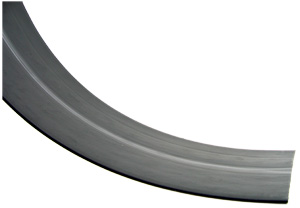
The term is “living hinge” is somewhat of a misnomer because neither it nor any other hinge is actually alive. Hinges are inanimate objects made of various materials, and living hinges are no exception. So, what is a living hinge exactly, and how do they differ from conventional hinges?
What Is a Living Hinge?
A living hinge is a type of hinge made of a thin and flexible material, typically plastic, that’s used to connect two objects of the same material. This is in stark contrast to conventional hinges, which are made almost exclusively out of metal like steel, aluminum, brass and iron. While the plastic composition of living hinges makes them weaker than metal conventional hinges, there are still reasons for manufacturing companies to use a living hinge.
Why Should Manufacturing Companies Choose a Living Hinge?
With their plastic design, living hinges can bend and flex without breaking. As a living hinge folds in and out, it creates minimal friction. Even when used for months or years, a living hinge will experience little or no wear, making it an excellent choice for high-stress applications. Metal hinges produce more friction than living hinges, so they tend to wear more quickly than their living counterparts.
Living hinges can also be used in applications where there’s a minimal amount of space available. They are incredibly thin when compared to conventional metal hinges, allowing them to fit into small spaces.
Furthermore, living hinges are relatively inexpensive to produce. Plastic is a cheaper material than most metals, so companies can produce living hinges for less than the cost of metal hinges.
Characteristics of Living Hinges
The two most important characteristics of living hinges is their thin design consisting of plastic material. But since they are made of plastic, living hinges are naturally protected from rust and corrosion. Metal hinges typically can’t be used in applications where moisture or humidity is a concern. Over time, exposure to moisture or humidity will cause metal to rust or corrode, resulting in the breakdown and degradation of the hinge. Living hinges don’t suffer from this problem since they are made entirely of plastic.
A lesser-known characteristic of living hinges is their quiet operation. When a conventional metal hinge is moved, it usually creates sound. Living hinges, on the other hand, are almost completely silent. When folded in or out, you won’t hear a living hinge move. Its thin plastic design suppresses noise to create near-silent operation.
